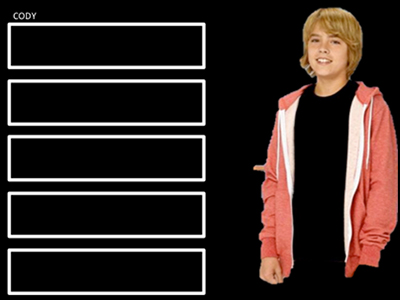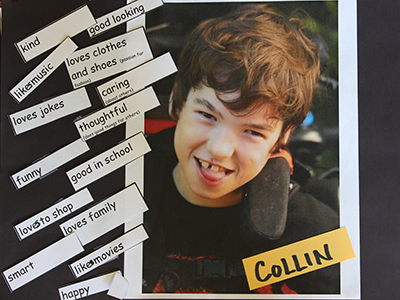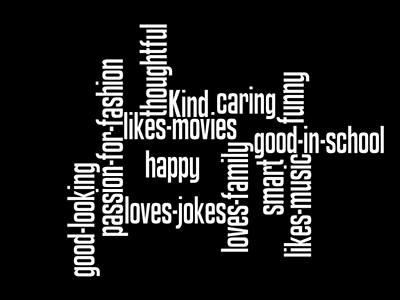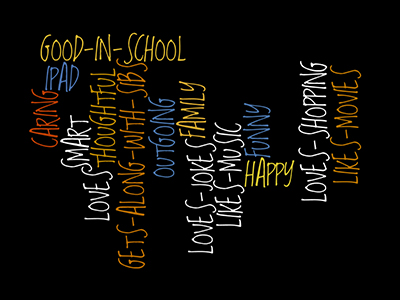Activity 2: Silhouette
Students engage in discussions and activities to develop awareness about themselves as individuals and document the qualities/traits that make them unique.
Purpose
Mentees learn about different character traits and begin to think about which words they can use to describe themselves (e.g., fun, smart, nerdy, determined, etc.).
Mentors begin to independently prepare their own examples to share during the lesson.
Materials
- Images from the mentees’ favorite television programs
- Images of individual characters
- 3-4 personal images of mentees and mentors
- Large pieces of construction paper
- Printed image of student(s)
- Large-print cards with adjectives/character traits (enough cards for each member of the group to select and paste on their construction paper)
- Large area to display/post images/cards
- Glue
Mentor Preparation
Mentors:
- review YouTube videos of the television shows
- develop words to describe the main characters of the show
- choose a character and select words that describe yourself to share as an example during the activity
- role-play with Self-Determination Program staff, prior to Silhouette activity session with the mentees
Activity
Based on favorite television shows, a display is created with images of characters from the television shows with cards describing traits of different characteristics. Students are directed to the display with the character images and cards. They are asked which television show they would like to talk about first. The group reviews the different characters and words that describe that character. The mentors select traits from one of the characters and share how they see themselves as that character.

Students review personality traits of different television character and then use the words to describe themselves.
“Woody from the television show ‘Suite Life’, is a nerd.”
“I am like Woody. I’m a total nerd.”- Tyson
Group members choose a piece of colored construction paper to begin creating their Silhouette poster. Mentees and mentors choose a personal photo to paste onto the construction paper. Mentors then ask students which character they would like to talk about and students choose character traits that they identify with and then paste the cards around their image on construction paper.

Students select character traits that best describe themselves.
“Charlie from ‘Good Luck Charlie’ is happy. Would you use that word to describe yourself?
“Yes.” Collin indicates using his head nod.
“Teddy in ‘Good Luck Charlie’ is creative. This means she likes using her imagination to create things. Who thinks they’re creative like Teddy?”
“Me.” – Collin indicates using his speech-generating device.
“Amy from ‘Good Luck Charlie’ is mean. Does this word describe you?”
“No.” Job indicates using ‘no’ card on his tray.
Extension Activity
The group displays their Silhouette activity poster in the classroom. As an extension activity, students can create a “Wordle” using the words from the activity. Students choose the font, color, text orientation, etc.

Students select character traits and use an online program to create a visual display of character traits.

Students select character traits and use an online program to create a visual display of character traits.
Adaptations
- Generate a list of words to describe each character (resources: television program website, Wikipedia, etc.)
- Create vocabulary trait cards
